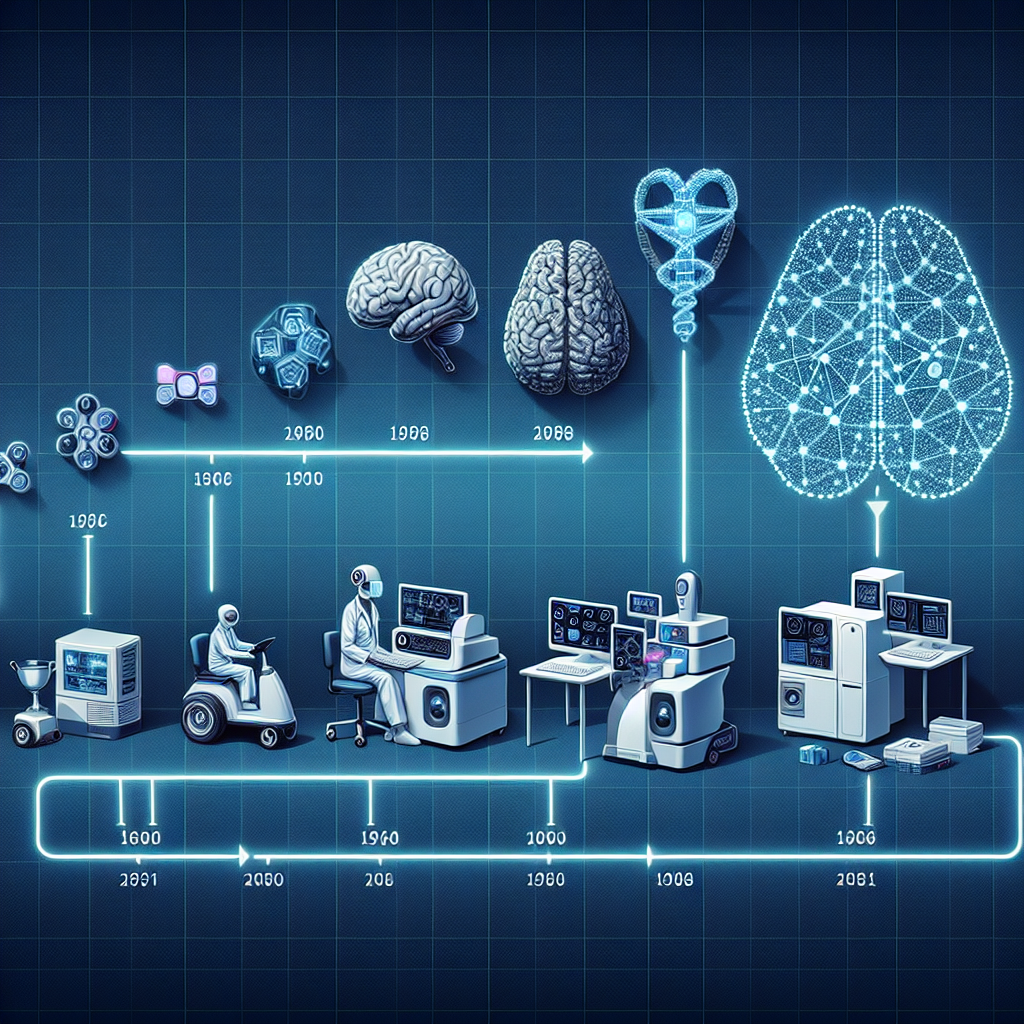The Evolution of Generative AI in Healthcare Diagnostics
In recent years, there has been a significant advancement in the field of artificial intelligence (AI) and its application in healthcare diagnostics. Generative AI, in particular, has emerged as a powerful tool for improving diagnostic accuracy and efficiency in a variety of medical settings. This technology has the ability to generate new data and insights, leading to more personalized and precise healthcare solutions.
Generative AI works by using algorithms to generate new data points based on existing data. In healthcare diagnostics, this technology can be used to analyze medical images, genomic data, and other patient information to identify patterns and make predictions about a patient’s health. By leveraging generative AI, healthcare providers can improve the accuracy and speed of diagnosis, leading to better patient outcomes.
One of the key areas where generative AI has made a significant impact is in medical imaging. Radiologists and other healthcare professionals rely on medical images, such as X-rays, MRIs, and CT scans, to diagnose and treat a variety of medical conditions. However, interpreting these images can be time-consuming and error-prone. Generative AI algorithms can analyze medical images and highlight abnormalities or patterns that may be missed by the human eye, leading to more accurate and timely diagnoses.
Another area where generative AI has shown promise is in genomics. The analysis of genomic data is crucial for understanding the underlying causes of diseases and developing personalized treatment plans. Generative AI algorithms can analyze genomic data to identify genetic markers and patterns that may be associated with specific diseases or conditions. This information can help healthcare providers design targeted therapies and interventions that are tailored to a patient’s unique genetic profile.
In addition to medical imaging and genomics, generative AI is also being used to improve diagnostic accuracy in a variety of other healthcare settings. For example, this technology can be used to analyze electronic health records, laboratory test results, and other patient data to identify trends and patterns that may indicate a potential health issue. By leveraging generative AI, healthcare providers can make more informed decisions about patient care and treatment options.
Overall, the evolution of generative AI in healthcare diagnostics has the potential to revolutionize the way we diagnose and treat medical conditions. By harnessing the power of AI algorithms to analyze complex data sets, healthcare providers can improve diagnostic accuracy, reduce errors, and deliver more personalized care to patients. As this technology continues to advance, we can expect to see even greater improvements in healthcare outcomes and patient satisfaction.
FAQs
Q: How does generative AI differ from other types of AI in healthcare diagnostics?
A: Generative AI differs from other types of AI in healthcare diagnostics in that it has the ability to generate new data points based on existing data. This technology can be used to analyze complex medical data sets and identify patterns that may be missed by human observers. By generating new insights and predictions, generative AI can improve diagnostic accuracy and efficiency in healthcare settings.
Q: What are some of the key benefits of using generative AI in healthcare diagnostics?
A: Some of the key benefits of using generative AI in healthcare diagnostics include improved diagnostic accuracy, faster turnaround times, and more personalized treatment options. This technology can help healthcare providers identify patterns and trends in medical data that may indicate a potential health issue, leading to better patient outcomes. Additionally, generative AI can help reduce errors and improve the efficiency of diagnostic processes.
Q: Are there any limitations or challenges associated with using generative AI in healthcare diagnostics?
A: While generative AI has shown promise in healthcare diagnostics, there are some limitations and challenges associated with this technology. For example, generative AI algorithms may be susceptible to bias or errors if they are not trained on diverse and representative data sets. Additionally, there may be concerns about the privacy and security of patient data when using generative AI in healthcare settings. It is important for healthcare providers to carefully evaluate these factors when implementing generative AI solutions.
Q: How can healthcare providers incorporate generative AI into their diagnostic processes?
A: Healthcare providers can incorporate generative AI into their diagnostic processes by partnering with AI companies that specialize in healthcare solutions. These companies can provide AI algorithms and tools that are specifically designed for analyzing medical data and generating insights. Healthcare providers can work with these companies to integrate generative AI into their existing diagnostic workflows and improve the accuracy and efficiency of their diagnostic processes.
Q: What are some of the future trends and developments we can expect to see in generative AI in healthcare diagnostics?
A: In the future, we can expect to see continued advancements in generative AI technology in healthcare diagnostics. This may include the development of more sophisticated algorithms that can analyze larger and more complex data sets, as well as the integration of generative AI with other technologies, such as robotics and virtual reality. Additionally, we may see the use of generative AI in new healthcare applications, such as drug discovery and personalized medicine. Overall, the future of generative AI in healthcare diagnostics looks promising, with the potential to revolutionize the way we diagnose and treat medical conditions.

